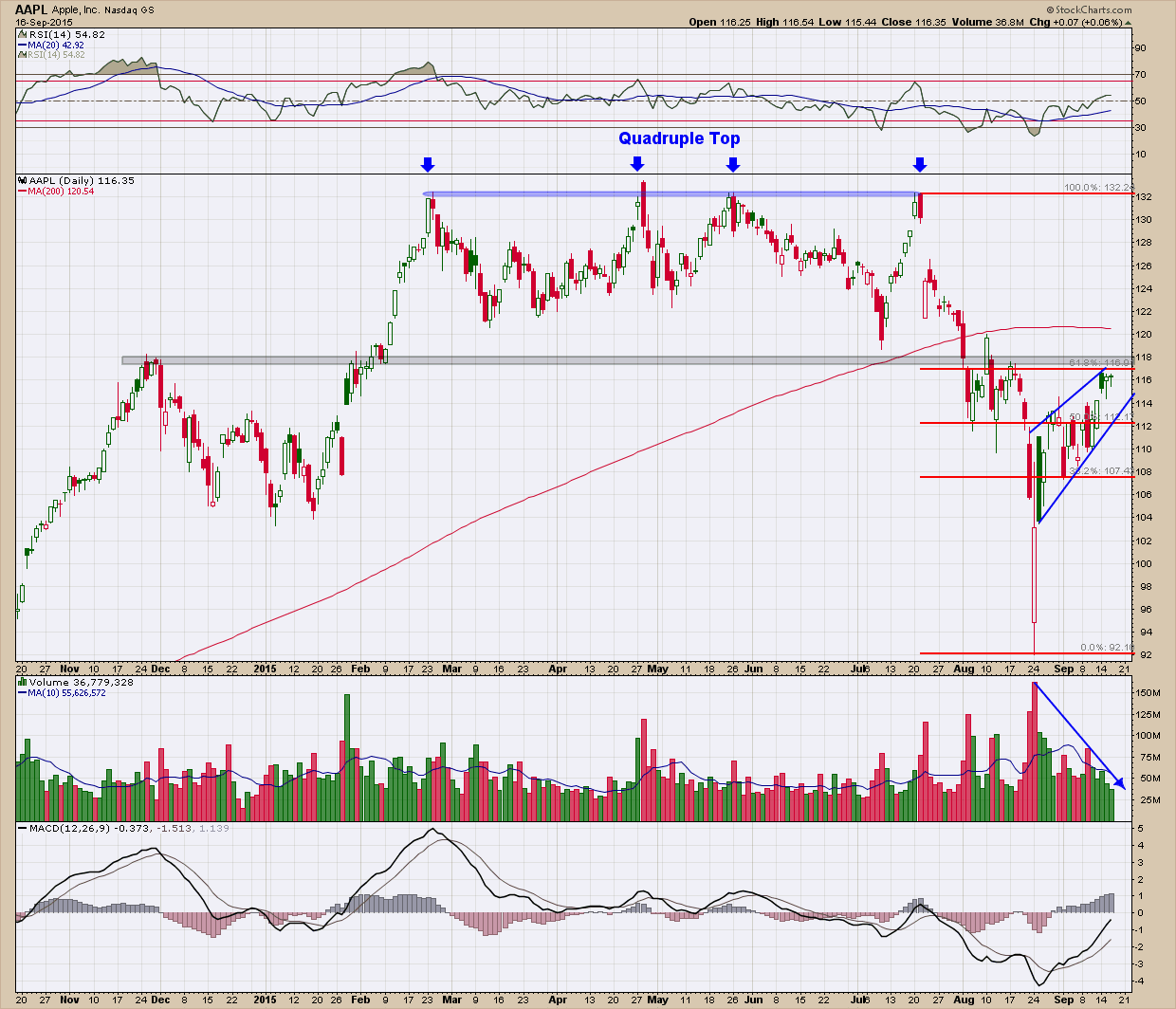Below is a chart of India’s Bombay Sensex index. You can see they broke out of a sideways consolidation in October of 2013. For the next 2 ¼ years, price rose almost 50% topping out in March of this year. Since peaking, it has been a choppy downward move creating negative momentum divergence and eventually gapping down through the 3 year (blue) uptrend line. Currently the moving averages are bearishly configured, pointing down and signaled a death cross in early May. Two months later it found at least a short term bottom stopping exactly where you would have expected, at the upper red horizontal support line. Looking to the left of where we are today we see that price has essentially gone nowhere over the past 19 months and has formed multiple different bearish topping patterns telling us there is a lot more downside if this support does not hold.
Like so many investments I am watching, this is do or die time. Will price bounce off current support and move higher or will it consolidate for a few more weeks or months and then finally give way under its own weight with an ultimate target at the lowest red horizontal support line some 20% below?
Again, if you look left to the left side of the chart just below the upper support line you will notice there exists very little supply of buyers who might be available to step in and cull any move to the downside until you reach the target zone. As such any confirmed close below the 25000 level will likely be followed by a swift and intense move lower. While I like India’s long term outlook, the short to intermediate term has me leaning neutral to bearish.






